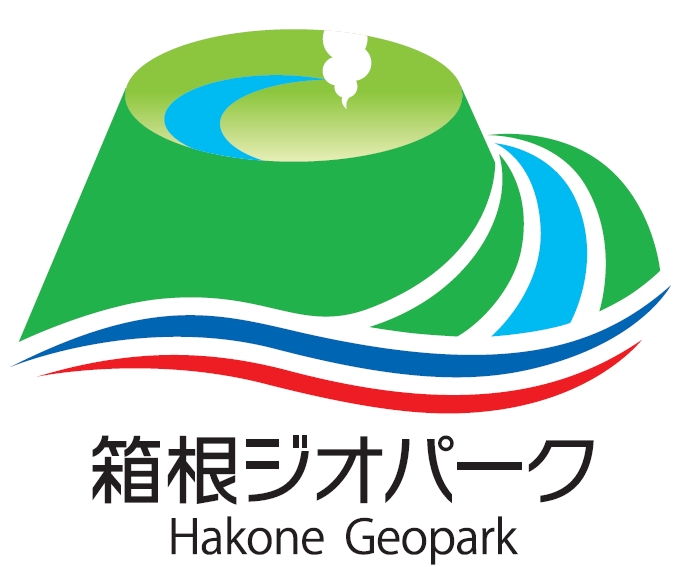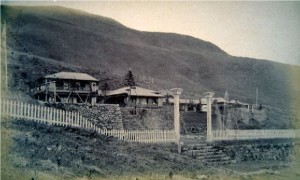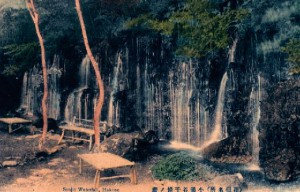Chisuji-no-taki Falls
The name of the waterfall, Chisuji-no-taki Falls, was inspired by the scene of water falling like thousands of threads.
A close look at the mossy rock face reveals that it consists of various sizes of rocks with soft edges.
Such a mass of rock is called a conglomerate. The water falling from its top is underground water from the Older Central Cone and Younger Central Cone.
The conglomerate is a result of debris flow deposition.
A debris flow caused by heavy rainfall or a collapsed mountain slope runsinto a river, and earth and sand mixed in the fast water flow is deposited.
This is the “Kojigokuyama Zenzu (Complete Drawings of Kojigokuyama)” drawn in the “Nanayu-no-shiori (Guide to the Seven Hot Springs)” that was published during the Edo period (Hakone Museum of History and Folklore Collection).

This scroll painting served as a guide book. It depicts the area around present day Kowakudani at that time when it was called Kojigoku.
During the Edo period, Kowakudani Valley was called “Kojigoku (Small Valley of Hell)” and was a desolate land. Kowakudani Valley was developed as a hot springs area around 1877.
Until the founder of the Mikawaya Ryokan, Enomoto Kyozo, told people how wonderful this waterfall was, it was unknown to most people. He made a road to the waterfall and because of this, it became widely known. It was said that at that time, there were also tea houses near the waterfall and it was very lively.


